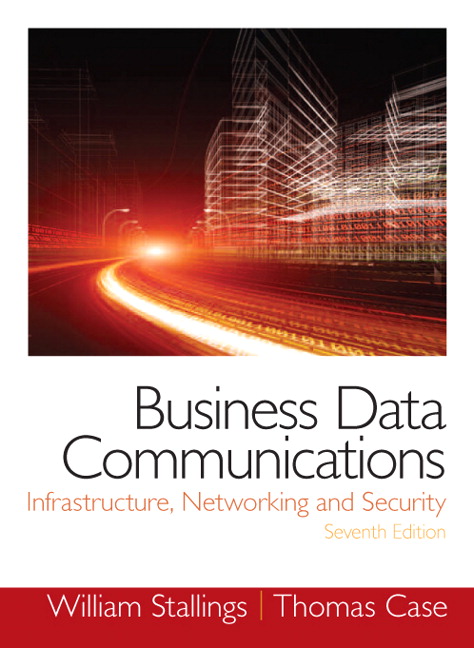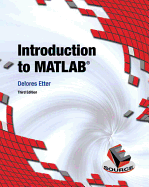Solution manual for Business Data Communications- Infrastructure, Networking and Security, 7/E 7th Edition William Stallings, Tom Case
$35.00 Original price was: $35.00.$26.50Current price is: $26.50.
Solution manual for Business Data Communications- Infrastructure, Networking and Security, 7/E 7th Edition William Stallings, Tom Case
Solution manual for Business Data Communications- Infrastructure, Networking and Security, 7/E 7th Edition William Stallings, Tom Case digital download immediately after payment is complete.

Product details:
- ISBN-10 : 0133023893
- ISBN-13 : 978-0133023893
- Author: William Stallings; Tom Case
Business Data Communications: Infrastructure, Networking and Security covers the fundamentals of data communications, networking, distributed applications, and network management and security. These concepts are presented in a way that relates specifically to the business environment and the concerns of business management and staff. While making liberal use of real-world case studies and charts and graphs to provide a business perspective, the book also provides the student with a solid grasp of the technical foundation of business data communications.
The diverse set of projects and student exercises enables the instructor to use the book as a component in a rich and varied learning experience and to tailor a course plan to meet the specific needs of the instructor and students.
The Seventh edition features a new co-author, Dr. Thomas L. Case, Professor and Chair of the Department of Information Systems at Georgia Southern University. New coverage of security-related issues is included in relevant places throughout the book to meet the needs of the IT/IS schools using this book and the growing emphasis on network security. Additionally, the Seventh edition now aligns with the ACM/AIS IS 2010 curriculum model.
Table Of Contents:
Chapter 0 Reader’s and Instructor’s Guide 0.1 Outline of This Book 0.2 Topic Ordering 0.3 Internet and Web Resources 0.4 Useful Publications Chapter 1 Introduction 1.1 Information and Communication 1.2 Data Communications and Networking for Today’s Enterprise 1.3 Convergence and Unified Communications 1.4 The Nature of Business Information Requirements 1.5 The Transmission of Information 1.6 Distributed Data Processing 1.7 The Internet and Distributed Applications 1.8 Networks 1.9 Management Issues 1.10 Standards 1.11 Key Terms, Review Questions, and Problems Appendix 1A Prefixes for Numerical Units Case Study I Unified Communications at Boeing (ONLINE) PART ONE REQUIREMENTS Chapter 2 Business Information 2.1 Audio 2.2 Data 2.3 Image 2.4 Video 2.5 Performance Measures Application Note: File Sizes 2.6 Summary 2.7 Key Terms, Review Questions, and Problems Case Study II CORE Credit Union (ONLINE) Chapter 3 Distributed Data Processing 3.1 Centralized Versus Distributed Processing 3.2 Forms of Distributed Data Processing 3.3 Distributed Data 3.4 Networking Implications of DDP 3.5 Big Data Infrastructure Considerations 3.6 Summary 3.7 Key Terms, Review Questions, and Problems Case Study III Managing Massive Data Warehouses at MasterCard International (ONLINE) PART TWO DATA COMMUNICATIONS Chapter 4 Data Transmission 4.1 Signals for Conveying Information 4.2 Transmission Impairments and Channel Capacity Application Note: Analog Signals 4.3 Summary 4.4 Key Terms, Review Questions, and Problems Chapter 5 Data Communication Fundamentals 5.1 Analog and Digital Data Communications 5.2 Data Encoding Techniques 5.3 Asynchronous and Synchronous Transmission 5.4 Error Detection Application Note: Devices, Encoding, Communication Parameters and Protocols 5.5 Summary 5.6 Key Terms, Review Questions, and Problems Chapter 6 Data Link Control and Multiplexing 6.1 Flow Control and Error Control 6.2 Motivation for Multiplexing 6.3 Frequency-Division Multiplexing 6.4 Synchronous Time-Division Multiplexing Application Note: Changing Communications 6.5 Summary 6.6 Key Terms, Review Questions, and Problems Appendix 6A High-Level Data Link Control Protocol Case Study IV Broadband Access: Global and Local Issues (ONLINE) PART THREE THE INTERNET AND DISTRIBUTED APPLICATIONS Chapter 7 The Internet 7.1 The Structure of the Internet 7.2 Internet Domains Application Note: Fitting DNS into your organizational structure 7.3 Dynamic Host Configuration Protocol 7.4 Summary 7.5 Key Terms, Review Questions, and Problems Case Study V Net Neutrality (ONLINE) Chapter 8 TCP/IP 8.1 A Simple Protocol Architecture 8.2 The TCP/IP Protocol Architecture 8.3 Internetworking 8.4 Virtual Private Networks and IP Security Application Note: Practical Guide to Networking 8.5 Summary 8.6 Key Terms, Review Questions, and Problems Appendix 8A TCP, UDP, and IP Details Appendix 8B The Trivial File Transfer Protocol Chapter 9 Client/Server, Intranet, and Cloud Computing 9.1 The Growth of Client/Server Computing 9.2 Client/Server Applications 9.3 Middleware 9.4 Intranets 9.5 Extranets 9.6 Service-Oriented Architecture Application Note: To Be Fat or Thin That is the Question 9.7 Cloud Computing 9.8 Summary 9.9 Key Terms, Review Questions, and Problems Case Study VI Shifting Sands: Chevron’s Migration to the Cloud Chapter 10 Internet-Based Applications 10.1 Electronic Mail 10.2 Web Access and HTTP 10.3 Web Security 10.4 Multimedia Applications Application Note: To Serve or Not to Serve? 10.5 Acceptable Use Policiess 10.6 Summary 10.7 Key Terms, Review Questions, and Problems Case Study VII E-Business at Guardian Life (ONLINE) Chapter 11 Internet Operation 11.1 Internet Addressing 11.2 Internet Routing Protocols 11.3 Multicasting 11.4 Quality of Service 11.5 Differentiated Services 11.6 Service Level Agreements 11.7 IP Performance Metrics Application Note: Where Does My Network Address Come From? 11.8 Summary 11.9 Key Terms, Review Questions, and Problems PART FOUR LOCAL AREA NETWORKS Chapter 12 LAN Architecture and Infrastructure 12.1 Background 12.2 LAN Configuration 12.3 Guided Transmission Media 12.4 LAN Protocol Architecture Application Note: Cabling Infrastructure 12.5 Summary 12.6 Key Terms, Review Questions, and Problems Appendix 12A Decibels and Signal Strength Case Study VIII Carlson Companies Chapter 13 Ethernet, Switches, and Virtual LANs 13.1 Traditional Ethernet 13.2 Bridges, Hubs, and Switches 13.3 High-Speed Ethernet Application Note: Networking with Ethernet 13.4 Virtual LANs 13.5 Power over Ethernet 13.6 Summary 13.7 Key Terms, Review Questions, and Problems Chapter 14 Wireless LANs 14.1 Overview 14.2 Wi-Fi Architecture and Services 14.3 IEEE 802.11 MAC and Physical Layer Standards 14.4 Gigibit WLANs 14.5 IEEE 802.11 Security Considerations Application Note: Deploying WLANs 14.6 Summary 14.7 Key Terms, Review Questions, and Problems Case Study IX St. Luke’s Health Care System: Using Mobility to Advance Health Care Delivery PART FIVE WIDE AREA NETWORKS Chapter 15 WAN Technology and Protocols 15.1 Switching Techniques 15.2 Circuit-Switching Networks 15.3 Packet-Switching Networks 15.4 Traditional Wide Area Network Alternatives 15.5 Voice over IP 15.6 Presence 15.7 Summary 15.8 Key Terms, Review Questions, and Problems Chapter 16 WAN Services
People also search:
Business Data Communications- Infrastructure, Networking and Security, 7/E 7th Edition
Business Data Communications- Infrastructure, Networking and Security
what is communication data
|
business data communications and networking
|
|
what are the four components of data communications
|
Related products
Solution Manual
Auditing A Risk Based-Approach to Conducting a Quality Audit Johnstone 10th Edition Solutions Manual
Solution Manual
Solution Manual
Solution Manual
Solution Manual
Solution Manual
International Business Competing in the Global Marketplace Hill 10th Edition Solutions Manual











